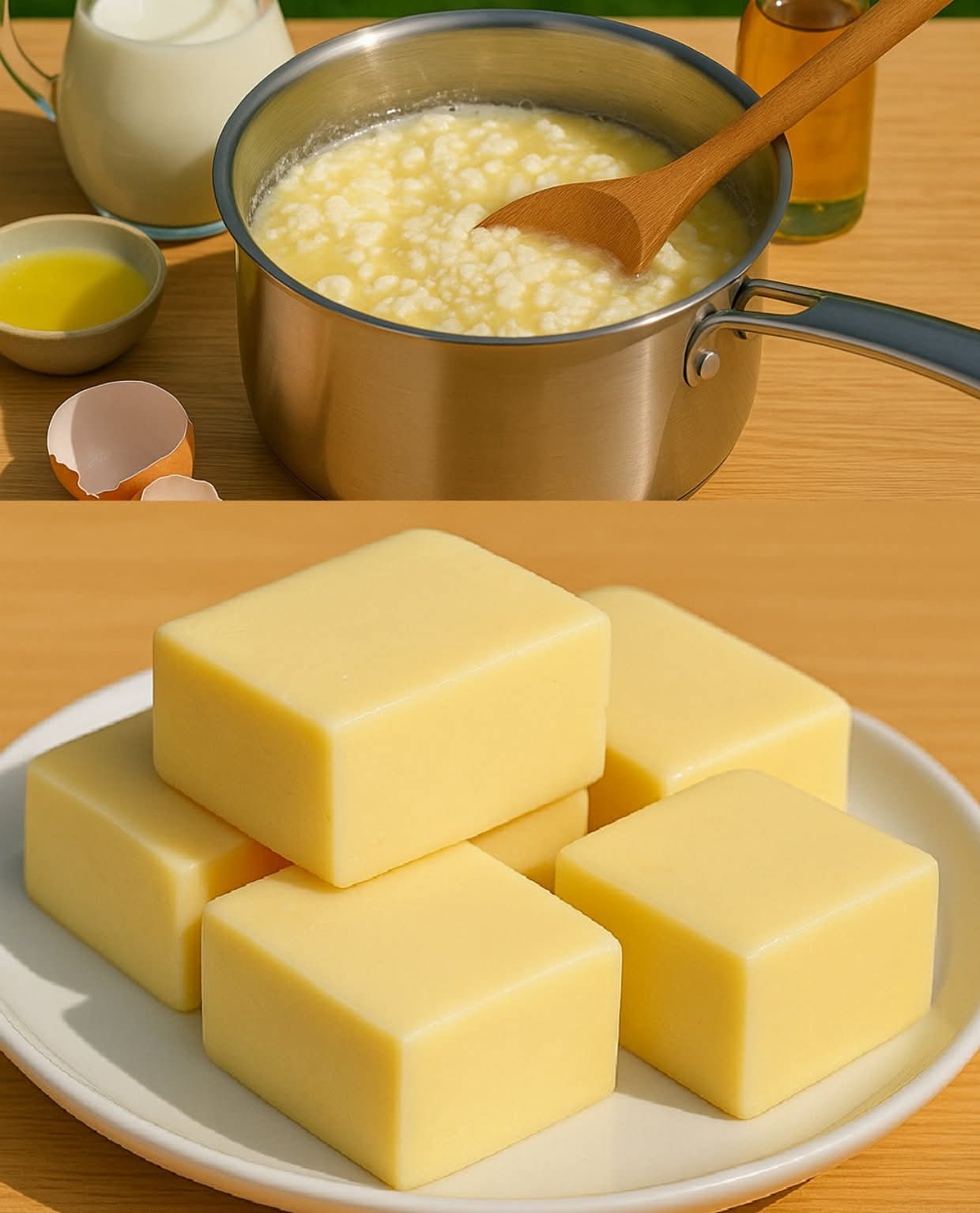🧈 Homemade Butter Blocks
Introduction
Making real butter at home is fast, fun, and incredibly rewarding. With only heavy cream and a pinch of salt, you’ll turn liquid cream into golden, sliceable blocks perfect for cooking, baking, and spreading. As a bonus, you also get fresh tangy buttermilk for pancakes or biscuits.
Ingredients
- 1 liter (4 cups) heavy cream (35–40% fat), well-chilled
- 3/4–1 tsp fine salt (optional, for salted butter)
- Ice water for washing the butter
Instructions (Stand Mixer or Hand Mixer)
- Whip to stiff peaks: Pour cold cream into a mixer bowl. Beat on medium–high until it passes whipped-cream stage and begins to look grainy.
- Separate butter & buttermilk: Keep beating; the fat will clump and the liquid will splash out. Once you see yellow clumps swimming in a milky liquid, stop. Strain through a fine sieve to collect the buttermilk (save it!).
- Wash: Put the butter solids back in the bowl. Add 1/2 cup ice water and knead with a spatula or clean hands to rinse out remaining buttermilk. Drain. Repeat with fresh ice water until the water runs almost clear (2–3 rinses). This step helps your butter keep longer.
- Salt & work: Sprinkle in salt (if using) and gently knead to distribute.
- Form blocks: Pack into a silicone mold or press between parchment, then chill until firm. Trim edges to make neat cubes or bars.
- Store: Wrap tightly. Refrigerate up to 2 weeks or freeze up to 6 months.
Alternative Methods
Food Processor
Process cold cream 4–6 minutes until it breaks. Strain, wash with ice water, salt, and mold as above.
Jar Shaking (no machines)
Fill a large jar halfway with cold cream. Shake vigorously 8–12 minutes: first it becomes whipped cream, then a heavy thud signals butter formation. Strain, wash, salt, and form.
From Milk (traditional)
Let non-homogenized whole milk sit chilled 24 hours. Skim the thick cream from the top, chill, then churn using any method above.
History
Butter has been crafted for millennia across Europe, the Middle East, and South Asia by churning cream from cow, sheep, goat, or buffalo milk. Cultured butter—slightly tangy from fermentation—was common before refrigeration. Today, modern mixers replicate the same simple “churn” in minutes.
Benefits
- Pure & customizable: Only cream and salt; add herbs, garlic, or spices for compound butters.
- Dual output: Fresh buttermilk for baking + high-quality butter for cooking.
- Better flavor & texture: Especially when using cultured cream.
Formation (What’s happening?)
Churning agitates cold cream until fat globules collide and merge. This phase inversion separates butterfat from the liquid buttermilk. Washing removes residual buttermilk so the butter stays fresh and forms smooth, firm blocks.
For Lovers (Serving Ideas)
- Spread on warm bread with flaky salt and a drizzle of honey.
- Pan-sear steaks with a thyme-garlic butter baste.
- Toss steamed vegetables with lemon-herb compound butter.
Conclusion
With one ingredient and a few minutes, you can craft luxurious, sliceable butter blocks at home—richer, fresher, and entirely your own. Save the buttermilk, flavor a portion with herbs, and enjoy the best of both worlds.
